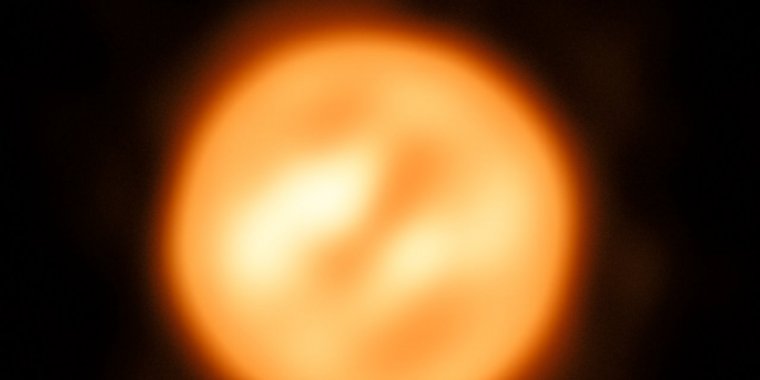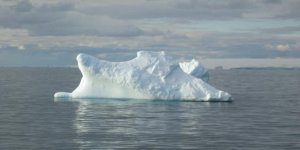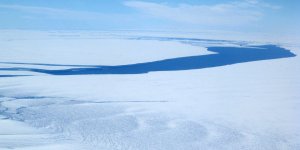| News / Science News |
Best Ever Image of a Star’s Surface and Atmosphere
Using ESO’s Very Large Telescope Interferometer astronomers have constructed the most detailed image ever of a star — the red supergiant star Antares. They have also made the first map of the velocities of material in the atmosphere of a star other than the Sun, revealing unexpected turbulence in Antares’s huge extended atmosphere.

VLTI reconstructed view of the surface of Antares. ![]()
To the unaided eye the famous, bright star Antares shines with a strong red tint in the heart of the constellation of Scorpius (The Scorpion). It is a huge and comparatively cool red supergiant star in the late stages of its life, on the way to becoming a supernova.
A team of astronomers from the Universidad Católica del Norte in Chile, has now used ESO’s Very Large Telescope Interferometer (VLTI) at the Paranal Observatory in Chile to map Antares’s surface and to measure the motions of the surface material.
Using the new results the team has created the first two-dimensional velocity map of the atmosphere of a star other than the Sun.
They did this using the VLTI with three of the Auxiliary Telescopes and an instrument called AMBER to make separate images of the surface of Antares over a small range of infrared wavelengths.
The team then used these data to calculate the difference between the speed of the atmospheric gas at different positions on the star and the average speed over the entire star. This resulted in a map of the relative speed of the atmospheric gas across the entire disc of Antares.
The astronomers found turbulent, low-density gas much further from the star than predicted, and concluded that the movement could not result from convection, that is, from large-scale movement of matter which transfers energy from the core to the outer atmosphere of many stars.
They reason that a new, currently unknown, process may be needed to explain these movements in the extended atmospheres of red supergiants like Antares.
In the future, this observing technique can be applied to different types of stars to study their surfaces and atmospheres in unprecedented detail. (ESO)
YOU MAY ALSO LIKE




